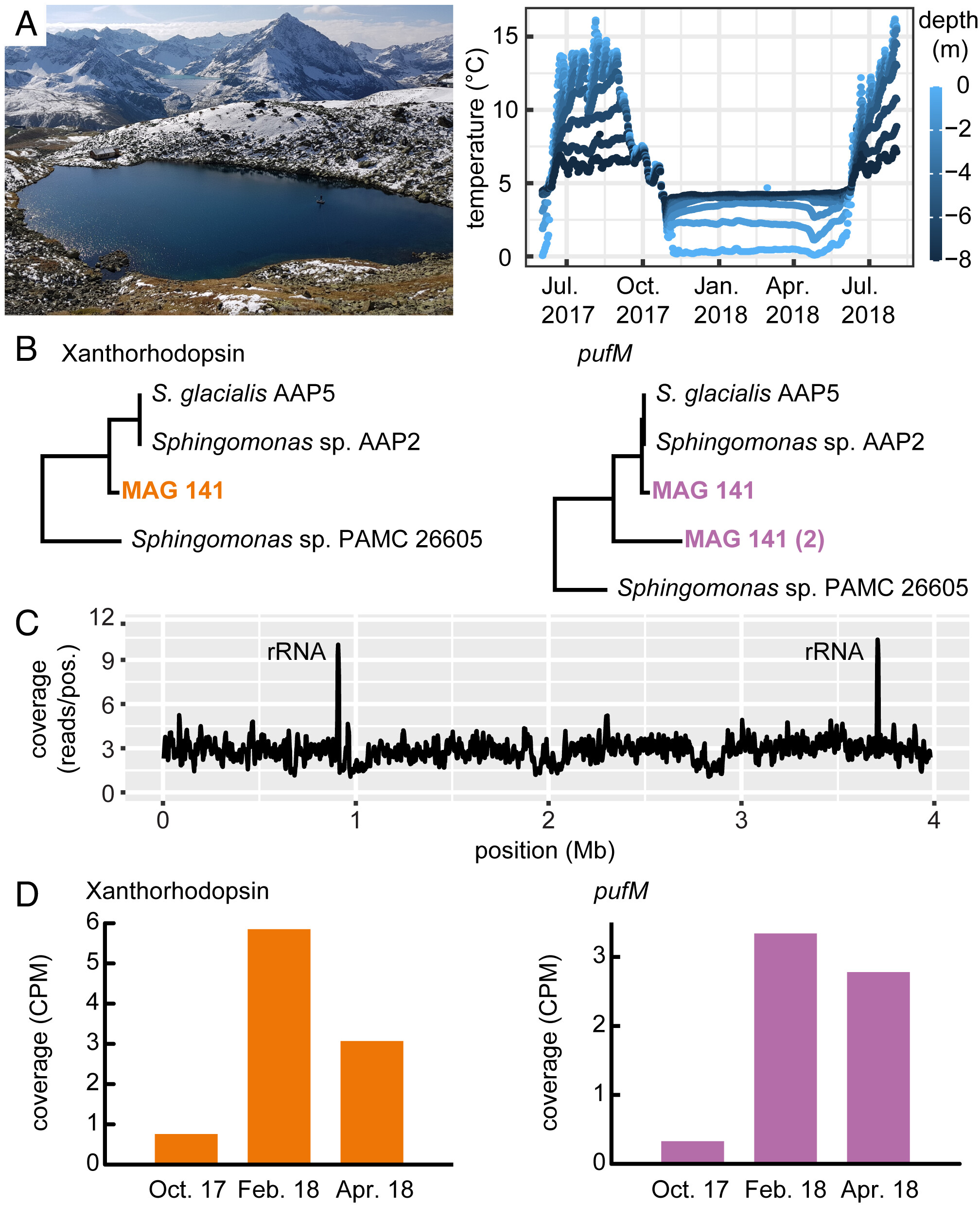Cold-loving bacterium from a mountain lake harvests light energy using both bacteriochlorophyll-containing photosystems as well as proton-pumping rhodopsins
doc. Mgr. Michal Koblížek, Ph.D. (Laboratoř anoxygenních fototrofů, Centrum ALGATECH, Mikrobiologický ústav AV ČR - vědecké pracoviště Třeboň)
Připojte se online: meet.google.com/qhf-etyu-sna
Bacterium Sphingomonas glacialis AAP5 isolated from the alpine lake Gossenköllesee contains genes for anoxygenic phototrophy as well as proton-pumping xanthorhodopsin. We found that BChl is expressed between 4°C and 22°C in the dark, whereas xanthorhodopsin is expressed only at temperatures below 16°C and in the presence of light. Thus, cells grown at low temperatures under a natural light–dark cycle contain both BChl-based photosystems as well as xanthorhodopsins. Its photosystems consist of circular light harvesting complex 1 composed from 16 homodimeric subunits surrounding the type-2 bacterial reaction center. The purified xanthorhodopsin is a trimer. It contains carotenoid nostoxanthin serving as an auxiliary antenna. Flash photolysis measurements proved that both systems are photochemically active.The captured light energy is used for ATP synthesis and stimulates growth. Thus, S. glacialis AAP5 represents a chlorophototrophic and a retinalophototrophic organism. Our analyses suggest that simple xanthorhodopsin may be preferred by the cells under higher light and low temperatures, whereas larger BChl-based photosystems may perform better at lower light intensities. This indicates that the use of two systems for light harvesting may represent an evolutionary adaptation to the specific environmental conditions found in alpine lakes characterized by low nutrients and large changes of irradiance and temperature.























